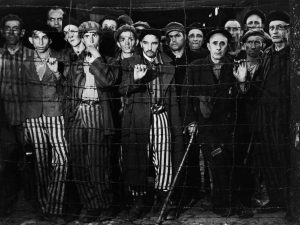Reflections on: Art and Conflict

RCUK intern Leanne Melbourne reports on our art and conflict seminar
“If history is the disciplined construction of collective memory, Art can be the undisciplined expression of collective dreams.” Dr Riley-Smith on why art should matter to policy-makers.
Conflict represents one intractable problem that policy-makers have to tackle. This session explored the complex role that art plays in relation to conflict, suggesting that images loaded with aesthetic and symbolic freight carry a force to be reckoned with here. Contributions came from a panel of artists, art historians and curators.
‘Art and Memory: Conflict and Conflict resolution’ was chaired by the Partnership’s external champion, Dr Tristram Riley-Smith. This was part of the Centre for Science and Policy’s (CSaP) annual conference on ‘How can government make better use of expertise and evidence from the humanities?’ held on the 14th April 2015 at Murray Edwards and Churchill College, University of Cambridge. Joining Dr Riley-Smith on the panel were Kathleen Palmer (Head of Art, Imperial war museum), Dr Glenn Sujo (Senior Faculty, Royal Drawing School) and the artist Šejla Kamerić.
Kathleen Palmer kicked off the session with a highly interesting talk on ‘What art can do for the museum?’ A wide range of art and art forms about modern war and conflict were displayed, these included paintings of 1st world war factory workers as well as postage stamps of photos of servicemen who died in the war in Iraq. Kathleen expressed how art prompted discussion and was the medium which could best describe the indescribable.
‘Art is the equivalent of slow food, it’s not easily digestible facts, it’s slowly baked to give rich flavours and rich ideas.’
Kathleen Palmer
Up next was Dr Glenn Sujo with his captivating talk on art from the Holocaust. He showcased images drawn and painted by artists living and working in the ghetto and in refugee, concentration and death camps. Aporiai, the Greek word for the absence of passage, was the theme of Dr Sujo’s talk in which he explored the subjective response of the artist. Each type of artist saw events in a dissimilar way, portrayed images in a different light and hence produced subjective and diverse pieces of work. He believed the artists’ subjective responses and the harrowing topics covered have previously left these works of art on the periphery of the art history conversation.
Finally the Bosnian artist Šejla Kamerić showcased some of the work she commissioned about the Bosnia war (1992-1995) for the Wellcome collections ‘Forensics: The Anatomy of Crime’. These consisted of videos of the forensic evidence used to aid in identifying the missing people of the war. The videos were portrayed randomly and continuously to signify that ‘each single point is connected to each other.’ Being only 16 years old when the war broke out, her art is used as a way of ‘confronting the war and depicting the memory of loss’. Šejla also talked of how she felt moved to do this piece of work, ‘after 20 years there is still no clear policy or narrative on the war, with so many victims unable to tell their stories.’ She sees art as a medium which could force governments to react in relation to conflict.
‘A form of armour in the face of existential threat and a mirror for reflection about conflict.’
Dr Riley-Smith
These words expressed by Dr Riley-Smith really summate the main theme which emerged from the lively debate at the end of the session. Art engages people who wouldn’t normally be engaged and therefore art is needed to depict those harrowing distressing moments that otherwise would be inexpressible.
Leanne Melbourne is currently working as an intern for RCUK Partnership for Conflict, Crime and Security research.



